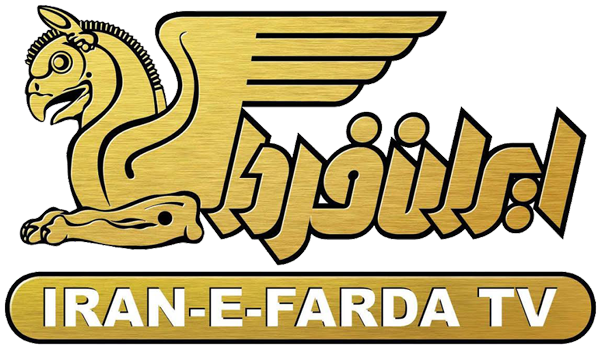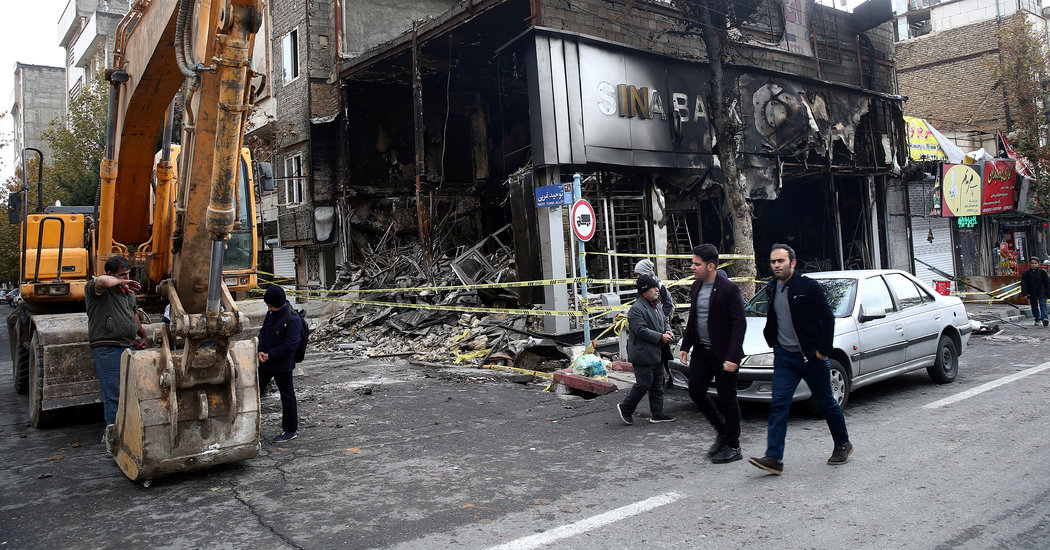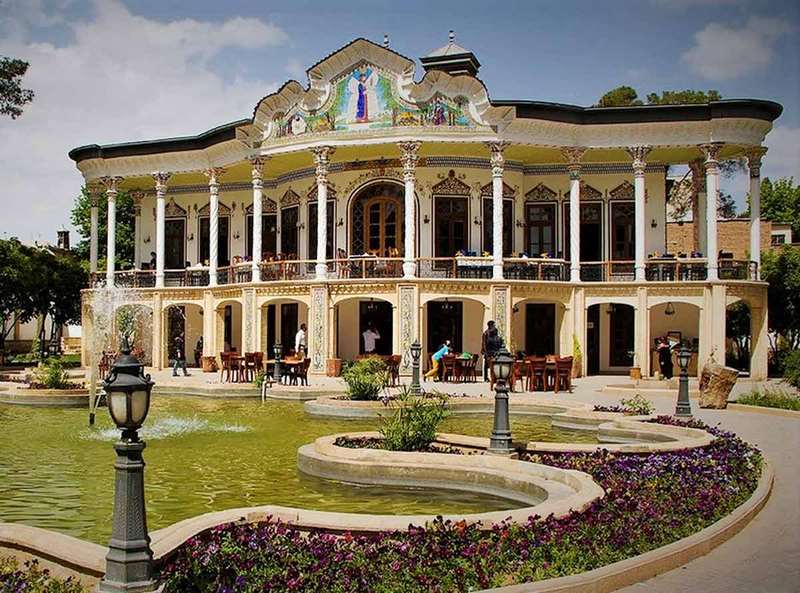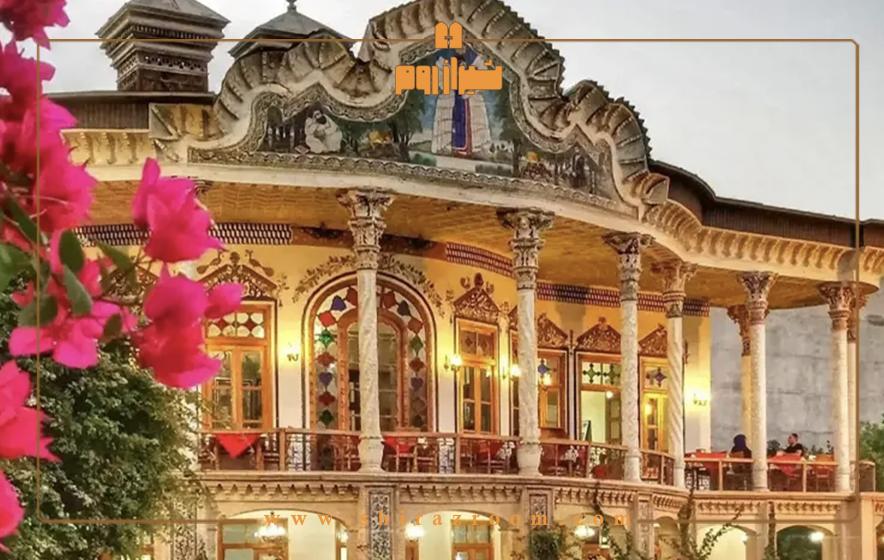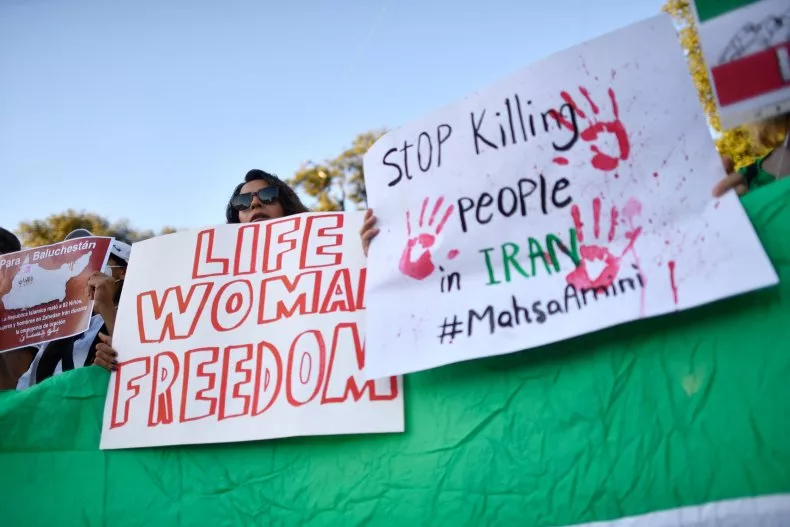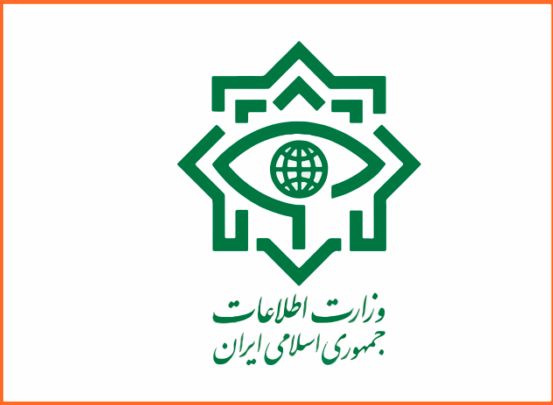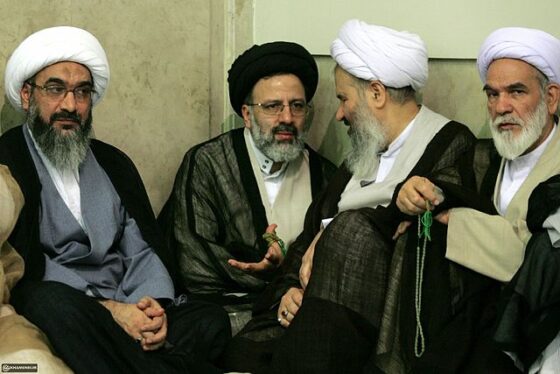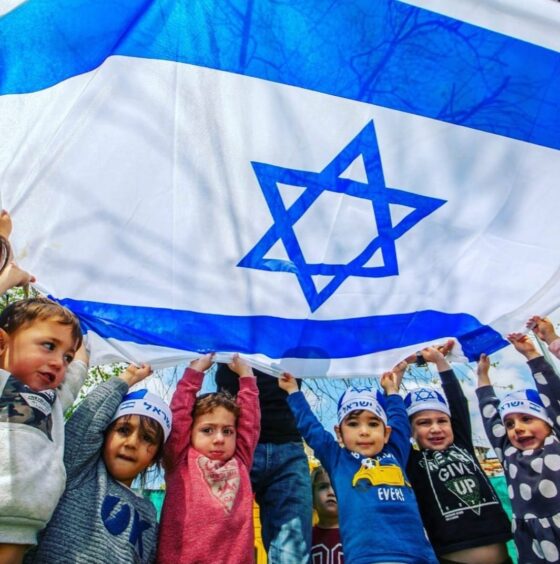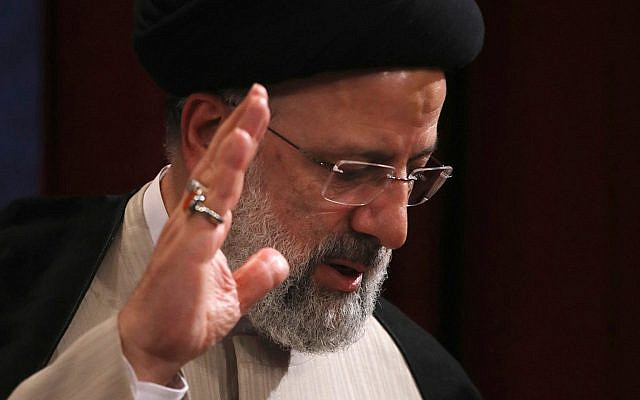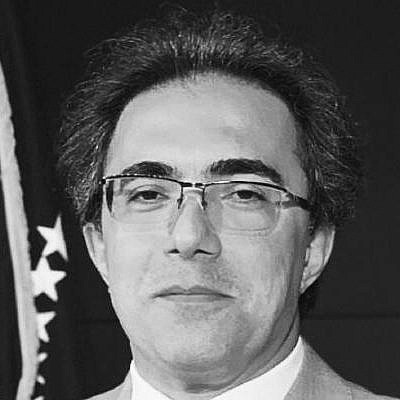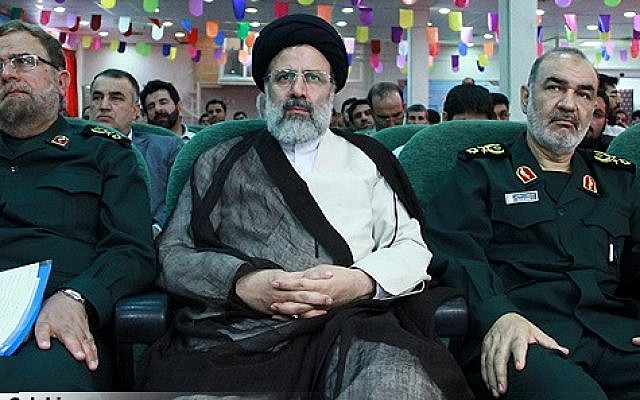Iran is experiencing its deadliest political unrest since the Islamic Revolution 40 years ago, with at least 180 people killed — and possibly hundreds more — as angry protests have been smothered in a government crackdown of unbridled force.
It began two weeks ago with an abrupt increase of at least 50 percent in gasoline prices. Within 72 hours, outraged demonstrators in cities large and small were calling for an end to the Islamic Republic’s government and the downfall of its leaders.
In many places, security forces responded by opening fire on unarmed protesters, largely unemployed or low-income young men between the ages of 19 and 26, according to witness accounts and videos. In the southwest city of Mahshahr alone, witnesses and medical personnel said, Islamic Revolutionary Guards Corps members surrounded, shot and killed 40 to 100 demonstrators — mostly unarmed young men — in a marsh where they had sought refuge.
“The recent use of lethal force against people throughout the country is unprecedented, even for the Islamic Republic and its record of violence,” said Omid Memarian, the deputy director at the Center for Human Rights in Iran, a New York-based group.
Altogether, from 180 to 450 people, and possibly more, were killed in four days of intense violence after the gasoline price increase was announced on Nov. 15, with at least 2,000 wounded and 7,000 detained, according to international rights organizations, opposition groups and local journalists.

Listen to ‘The Daily’: A Deadly Crackdown in Iran
Behind the curtain of an internet blackout, the Islamic Republic’s security forces have killed at least 180 unarmed protesters.
transcript
transcript
Listen to ‘The Daily’: A Deadly Crackdown in Iran
Hosted by Michael Barbaro and Natalie Kitroeff; produced by Jonathan Wolfe, Luke Vander Ploeg and Annie Brown; with help from Jazmín Aguilera and Sayre Quevedo; and edited by M.J. Davis Lin
Behind the curtain of an internet blackout, the Islamic Republic’s security forces have killed at least 180 unarmed protesters.
- michael barbaro
-
From The New York Times, I’m Michael Barbaro. This is “The Daily.”
Today: Iran is experiencing its deadliest political unrest in over 40 years, with nearly 200 people killed by government forces in the last few weeks. Natalie Kitroeff speaks to Farnaz Fassihi about why the United States wanted that unrest and has helped fuel it. It’s Tuesday, December 3.
- natalie kitroeff
-
Farnaz, take me back to the beginning of the recent uprising in Iran. How did it start?
- farnaz fassihi
-
On Friday, November 15, this was about 15 minutes before midnight Iran time. I was busy reporting another story on Iran that we plan to launch. And I started receiving text messages and emails from my contacts in Iran, from my family members, from friends, and from sources, asking me if I had heard anything about gas prices going up by almost 300% as of midnight. People were very alarmed. They were shocked. They thought that this can’t be. This is a rumor. How could they increase prices without telling us? How can we afford to go to work? How can we afford to buy basic goods if gas prices triple in price? There was a lot of anxiety almost immediately.
- archived recording
-
In other news, authorities in Iran abruptly raised the price of fuel in the country by 50% overnight.
- farnaz fassihi
-
Iranians wake up the next morning. They see official announcement in the news media on state TV that this is in fact not a rumor.
- archived recording
-
I hadn’t heard the news. I came here and filled three liters, and then I noticed the price was 90,000 reals. It resulted in long lines of cars waiting for hours at petrol stations in the capital, Tehran.
- farnaz fassihi
-
And they start to panic.
- archived recording
-
Motorists fear the consequences will be far reaching. In Tehran and the rest of Iran, everything is dependent on fuel prices. If the price of fuel goes up in the night, by day the price of rent will go up as well as other living expenses.
- farnaz fassihi
-
They start messaging each other on WhatsApp groups, posting things on social media saying, people, let’s protest this. Let’s get to the streets and show them that we’re angry at this.
- archived recording
-
Mobile phone video out of western Iran shows people chanting, fuel prices go higher. The poor get poorer.
- farnaz fassihi
-
On Friday by noon, people on major highways in Tehran and other big cities had parked their cars, and created a massive traffic jam, and turned off their cars for miles, and miles, and miles.
- natalie kitroeff
-
Wow.
- archived recording
-
And near the border with Iraq, they repeat, “Turn your car off,” while blocking traffic.
- farnaz fassihi
-
And people were gathering at gas stations, and putting roadblocks on gas stations, and preventing other motorists from filling up their tanks as a way to protest.
And in the first 24 hours, the protests were pretty peaceful. People were coming out. They were just voicing their concern. They were saying, we’re angry. Listen to us.
By Saturday, November 16, the protests were gaining steam, and they were changing in nature.
- archived recording
-
There are videos of nighttime protests where demonstrators have gone out into the street and are chanting anti-regime slogans.
- farnaz fassihi
-
They had quickly shifted from being protests about gas prices and the economy to targeting the entire establishment of the Islamic Republic. There were people in the streets saying death to Khomeini, the Supreme Leader, death to the dictator.
- archived recording
-
Government buildings have been set on fire as well as banks.
- farnaz fassihi
-
There were reports of banks getting torched and government buildings being attacked.
- archived recording
-
So for the moment, there does seem to be a lot of momentum behind all of this. But the Iranian government does have a tendency to violently crack down on these kinds of protests.
- farnaz fassihi
-
As the protests spread, we started noticing that there was a disruption in our communications with Iran. I had a really hard time calling sources on their cell phones. Their mobile service was disrupted. I kept sending text messages, and it would bounce back. And by Sunday, the entire country went dark. They unplugged the internet.
- natalie kitroeff
-
So what do you do as a reporter who’s trying to cover this country from the outside? How do you get around this to figure out what’s going on?
- farnaz fassihi
-
It was very challenging. I wanted to call sources on their landlines or on their mobile service. But I was worried that if I do, those calls could be intercepted, and they could get in trouble. I tried to call my relatives and people that I thought would talk to me, and they were terrified. They would say, “Nothing’s going on. Everything is fine. How is the weather?” And try to change the subject because they thought that these calls might be monitored. We tried to monitor the videos that were trickling out. But if there were protests in thousands of cities in Iran, we were getting maybe less than a dozen videos or eyewitness accounts a day. But we could quickly tell that things were getting more and more violent.
- natalie kitroeff
-
And then what happens?
- farnaz fassihi
-
Then slowly internet and mobile service is restored. And the first accounts that we start getting are from local journalists who have access to the internet when they come to work. And they’ve gathered reporting data, and videos, and eyewitness accounts they are banned from publishing. And they start to leak it out. They start to post it on social media. They start contacting reporters like me whom they know and trust and sharing these things. So as the curtain lifts on Iran, we are able to see the scope of the disaster and the violence.
- natalie kitroeff
-
And so what do we learn about what happened?
- farnaz fassihi
-
We learned that in a space of 72 hours, Iran turned off the lights and opened fire at civilian protesters who were unarmed.
We see shocking videos of dead bodies piled up on the street, security forces chasing down unarmed protesters who were throwing rocks and opening machine gun fire on them, and people dropping dead. We see close-up assassination-style shootings where the police force would walk up to a young man, and point the gun to their head, and just pull the trigger. We start seeing videos of this one particular young man that I will name — Pouya Bakhtiari — a 23-year-old engineer who is filming his last hours of life.
- archived recording (pouya bakhtiari)
- [NON-ENGLISH SPEECH]
- farnaz fassihi
-
He is going around in the protests. He’s saying, I am an engineer. I am unemployed. I’m coming out because I’m fed up with this system. I’m coming out because I’m so happy to see that everybody’s supporting us. And then it’s sunset, and he turns the camera to the sunset and says —
- archived recording (pouya bakhtiari)
- [NON-ENGLISH SPEECH]
- farnaz fassihi
-
— look at this beautiful sunset. I wish for a new dawn for my country. And a few hours later, he’s shot and killed.
- natalie kitroeff
-
And how many more are there like him who were killed?
- farnaz fassihi
-
So many more. There’s so many more young men who were killed, young women, even children. The death toll ranges somewhere from 180 to 450 and continues to climb as more cities and more people get connected to the internet and have a way of reaching out and tell their stories. We found out about the city of Mahshahr on Friday just as internet went up, where the Revolutionary Guards came in a big force and started shooting indiscriminately at dozens of young men who had blocked the main entryway to the city and to an industrial complex. [SHOUTING] [GUNSHOTS] Some of them dropped dead. The others ran to a nearby marsh.
And one person was armed. They shot at the Revolutionary Guards from the marshes. The guards encircled them and with machine gunfire opened fire on them. [GUNSHOTS]
And the estimate is that between 40 to 100 people were killed in that mass-murder incident.
- natalie kitroeff
-
Farnaz, help me understand how a hike in gas prices caused all of this unrest.
- archived recording
-
There was a lot of pent-up anger and frustration over a host of things, from financial corruption, to unemployment, inflation. The government tells people how to dress, how to think, what to do, where to go. And the sudden surprise price increase in gasoline was really the last straw. Gasoline is very cheap in Iran because Iran is a major oil producing country, and gas prices are subsidized. A whole micro-economy had formed around this cheap gasoline prices where people used their cars and their motorcycles to compensate for the fact that they couldn’t find jobs. A lot of college graduates are Uber drivers. A lot of young men are messengers on motorcycles. They can’t now afford to buy cheap gasoline to put in their cars and have a business or make a livelihood. The prices of basic goods like bread, dairy, meat, everything has increased by at least 20% because transportation costs have increased. And on top of waking up to the reality that gasoline prices have tripled and their purchasing powers have shrunk, the Iranian people have been struggling with the pressures of American sanctions on their economy.
- natalie kitroeff
-
What is the role of the U.S. and U.S. sanctions in all of this?
- farnaz fassihi
-
U.S. sanctions play a pretty significant role in Iran’s economy. Different U.S. administrations have imposed sanctions on Iran in order to squeeze and pressure its economy. The 2015 nuclear deal between Iran and the world powers lifted those sanctions. And it brought in a lot of hope and a lot of investments from foreign companies and a lot of job possibilities for Iranians. And then President Trump comes in.
- archived recording (donald trump)
-
I am announcing today that the United States will withdraw from the Iran nuclear deal.
- farnaz fassihi
-
He exits the nuclear deal. And suddenly, all of that hope, all of those financial possibilities come to a halt.
- archived recording (donald trump)
-
We will be instituting the highest level of economic sanction.
- farnaz fassihi
-
And immediately we start seeing significant impact on the currency, on Iran’s ability to do trade. And suddenly the government’s facing a massive budget deficit.
- natalie kitroeff
-
And the stated goal of these more punishing sanctions is to bring Iran to the negotiating table in a more serious way, right?
- farnaz fassihi
-
Well, that’s the stated goal. But all along there’s been also an unstated goal and policy, which is hoping that these punishing sanctions would pressure Iranians to rise up against the regime, to start pushing the government to have no choice but to come to the table and discuss a more comprehensive deal, because not only is it facing international pressure, but the sanctions are destabilizing the society in Iran as well.
- natalie kitroeff
-
So in a sense the Trump administration wanted this uprising to happen all along.
- farnaz fassihi
-
Yes. U.S. officials have embraced these protests. The Special Envoy of Iran, Brian Hook, gave an interview and said, we’re very pleased to see the protests across Iran. Brian Hook’s comments were unusual because typically when there is unrest and protests in countries, the response from senior U.S. officials is that we’re watching what’s happening. We’re monitoring what’s happening. We support the people. But you rarely see them putting themselves at the front and center of these protests by saying, we’re very pleased. Even Secretary of State Mike Pompeo tweeted that he has asked Iranian protesters to communicate with him and send him video footage of the violence against them.
- archived recording (mike pompeo)
-
We have received to date nearly 20,000 messages, videos, pictures, notes of the regime’s abuses through Telegram messaging services. I hope they will continue to be sent to us.
- natalie kitroeff
-
So if the unstated goal of these sanctions was to cause all of this unrest, then they worked. But what about the second part, the death of the protesters? How much was the violence that followed part of the plan?
- farnaz fassihi
-
I think the responsibility of the violence on protesters solely falls on the government of Iran because at the end of the day, they’re the ones that ordered their security forces to crush and use lethal force against civilians. So an understanding of Iran’s modern history would tell you that if there was a popular uprising, the government would crack down and crush it very quickly and with a lot of force.
- natalie kitroeff
-
We’ll be right back.
Farnaz, what is the precedent in Iran for this kind of violent response to a citizen uprising?
- farnaz fassihi
-
Unfortunately, there is a history of Iranian rulers crushing citizen uprisings violently.
- archived recording
-
The crowds found the road to Jaleh Square blocked by troops.
- farnaz fassihi
-
In 1978 —
- archived recording
-
As their numbers increased, they pressed forward, and the troops opened fire.
- farnaz fassihi
-
— the Shah of Iran opened fire at protesters at a peaceful sit-in and killed 84 people. That sparked the beginning of the end for him.
- archived recording
-
When I saw the Shah shortly afterwards, it was the first time I’d really felt that he saw that a situation was arising which he couldn’t handle. By January of 1979, it was clear the Shah could no longer reign.
- farnaz fassihi
-
And the revolution in 1979 that brought the Islamic republic to power, the new government promised that it would abandon the ways of the Shah and create a free society where criticism was tolerated in public discourse and debates would be free. And what we’ve seen is the exact opposite. The last episode of a nationwide uprising happened in 2009 in response to a contested presidential election.
- archived recording
-
Tens of thousands of opposition supporters, mostly young, marched to Freedom Square.
- farnaz fassihi
-
Iranians took to the streets asking for a recount of the votes and staged peaceful protests all over the country.
- archived recording
-
Violence on the streets of Tehran.
- farnaz fassihi
-
And the government cracked down —
- archived recording
-
Bloodshed in the streets of Iran. At least seven people are reported to have been shot and killed after a mass rally over charges of election fraud.
- farnaz fassihi
-
— and over a period of 10 months killed about 72 people. So based on this history, the U.S. could have predicted that an uprising would result in violence. But the level of violence we saw was unprecedented. Nobody could have predicted this.
- natalie kitroeff
-
Right. So the situation in Iran is spiraling. It’s becoming more extreme than anyone thought it would be. And I’m wondering, what does that mean for the U.S. strategy? Does this outcome constitute a success?
- farnaz fassihi
-
I think the U.S. administration’s trying to portray the events of the past few weeks as a success because it’s harsh policies on Iran are resulting in a popular uprising. But if the ultimate goal is to bring Iran’s leaders to the negotiating table, that policy might have actually backfired. The U.S., by aligning itself with the Iranian people, has given the Iranian leadership ammunition to delegitimize the demands of the people.
- natalie kitroeff
-
What do you mean by that?
- farnaz fassihi
-
Well, on the surface it looks as if the comments by Mr. Hook and Secretary Pompeo will help the Iranian people because it shows that the U.S. administration stands in solidarity with their demands. But it also plays directly into the playbook of the Iranian regime, which takes all sorts of comments by the American administration and Westerners as proof that the uprising is not homegrown, that the demands of the population are not legitimate and they are being staged and instigated by Washington.
- natalie kitroeff
-
So ultimately it sounds like the U.S. strategy may end up undercutting the power of these protests.
- farnaz fassihi
-
Correct. It also undermines the ability of President Rouhani, who is considered a moderate in the political structure of Iran, to negotiate with the U.S. and to come to the table with Mr. Trump. The majority of people who handed Rouhani a victory are talking about sitting out the elections. They’re talking about boycotting the elections. So if the centrists and the reformers, if the public doesn’t vote, then the hardliners are going to win. And we’re going to see a hardening of policies in Iran, particularly about engagement with the United States.
- natalie kitroeff
-
So while the goal was to bring the Iranian government to the negotiating table, this may end with a government that’s more extreme and more anti-West.
- farnaz fassihi
-
That was always the fear with the Trump administration’s maximum pressure policy that it would actually empower the very factions that Washington does not want to see empowered.
- natalie kitroeff
-
Farnaz, what happens next for the Iranian people?
- farnaz fassihi
-
The Iranian people are terrified right now. They are coming to terms with a new level of force being used against them. The cities and neighborhoods where there was an uprising very much feel like a security zone. We’re hearing of security forces going door to door in some areas where women were cooking for protesters and arresting those women. Students are being abducted on college campuses. There was an incident where the militia hid in five ambulances, and went to the campus of Tehran University in disguise, and rounded up students, shoved them in the ambulances, and drove out. And nobody knows where they are.
The protests have been crushed. There is no more uprising, but this arrests and feeling of repression is still very much alive. The underlying reasons for this uprising have not been resolved. And we can expect that the next time there is the equivalent of a gas price increase or a political decision that’s not popular with the public, it would also spark another round of uprising. And the next wave would likely be a lot more violent and the crackdown a lot more brutal.
- natalie kitroeff
-
Farnaz, thank you so much.
- farnaz fassihi
-
Thank you very much for having me.
- natalie kitroeff
-
We’ll be right back.
- michael barbaro
-
Here’s what else you need to know today. On Monday, President Trump said he would impose tariffs on steel and aluminum from Brazil and Argentina, a move that would destroy previous agreements with both countries, damage their economies and widen a global trade war. In a tweet announcing the tariffs, Trump accused Brazil and Argentina of manipulating their currencies in a way that hurts American farmers, a claim that both economists and government officials have rejected. The decision appeared to surprise leaders of both countries, especially Brazil’s new president, Jair Bolsonaro, who has tried to establish close ties with Trump.
Bolsonaro appeared to learn of the tariffs from a reporter, who read him Trump’s tweet.
- archived recording
- [NON-ENGLISH SPEECH]
- michael barbaro
-
That’s it for “The Daily.” I’m Michael Barbaro. See you tomorrow.
The last enormous wave of protests in Iran — in 2009 after a contested election, which was also met with a deadly crackdown — left 72 people dead over a much longer period of about 10 months.
Only now, nearly two weeks after the protests were crushed — and largely obscured by an internet blackout in the country that was lifted recently — have details corroborating the scope of killings and destruction started to dribble out.
The latest outbursts not only revealed staggering levels of frustration with Iran’s leaders, but also underscored the serious economic and political challenges facing them, from the Trump administration’s onerous sanctions on the country to the growing resentment toward Iran by neighbors in an increasingly unstable Middle East.
The gas price increase, which was announced as most Iranians had gone to bed, came as Iran is struggling to fill a yawning budget gap. The Trump administration sanctions, most notably their tight restrictions on exports of Iran’s oil, are a big reason for the shortfall. The sanctions are meant to pressure Iran into renegotiating the 2015 nuclear agreement between Iran and major world powers, which President Trump abandoned, calling it too weak.
Most of the nationwide unrest seemed concentrated in neighborhoods and cities populated by low-income and working-class families, suggesting this was an uprising born in the historically loyal power base of Iran’s post-revolutionary hierarchy.
Many Iranians, stupefied and embittered, have directed their hostility directly at the supreme leader, Ayatollah Ali Khamenei, who called the crackdown a justified response to a plot by Iran’s enemies at home and abroad.
The killings prompted a provocative warning from Mir Hussein Moussavi, an opposition leader and former presidential candidate whose 2009 election loss set off peaceful demonstrations that Ayatollah Khamenei also suppressed by force.
In a statement posted Saturday on an opposition website, Mr. Moussavi, who has been under house arrest since 2011 and seldom speaks publicly, blamed the supreme leader for the killings. He compared them to an infamous 1978 massacre by government forces that led to the downfall of Shah Mohammed Reza Pahlavi a year later, at the hands of the Islamic revolutionaries who now rule the country.
“The killers of the year 1978 were the representatives of a nonreligious regime and the agents and shooters of November 2019 are the representatives of a religious government,” he said. “Then the commander in chief was the shah and today, here, the supreme leader with absolute authority.”
The authorities have declined to specify casualties and arrests and have denounced unofficial figures on the national death toll as speculative. But the nation’s interior minister, Abdolreza Rahmani Fazli, has cited widespread unrest around the country.
On state media, he said that protests had erupted in 29 out of 31 provinces and 50 military bases had been attacked, which if true suggested a level of coordination absent in the earlier protests. Iran’s official media have reported that several members of the security forces were killed and injured during the clashes.
The property damage also included 731 banks, 140 public spaces, nine religious centers, 70 gasoline stations, 307 vehicles, 183 police cars, 1,076 motorcycles and 34 ambulances, the interior minister said.
The worst violence documented so far happened in the city of Mahshahr and its suburbs, with a population of 120,000 people in Iran’s southwest Khuzestan Province — a region with an ethnic Arab majority that has a long history of unrest and opposition to the central government. Mahshahr is adjacent to the nation’s largest industrial petrochemical complex and serves as a gateway to Bandar Imam, a major port.
The New York Times interviewed six residents of the city, including a protest leader who had witnessed the violence; a reporter based in the city who works for Iranian media, and had investigated the violence but was banned from reporting it; and a nurse at the hospital where casualties were treated.
They each provided similar accounts of how the Revolutionary Guards deployed a large force to Mahshahr on Monday, Nov. 18, to crush the protests. All spoke on condition of anonymity for fear of retribution by the Guards.
For three days, according to these residents, protesters had successfully gained control of most of Mahshahr and its suburbs, blocking the main road to the city and the adjacent industrial petrochemical complex. Iran’s interior minister confirmed that the protesters had gotten control over Mahshahr and its roads in a televised interview last week, but the Iranian government did not respond to specific questions in recent days about the mass killings in the city.
Local security forces and riot police officers had attempted to disperse the crowd and open the roads, but failed, residents said. Several clashes between protesters and security forces erupted between Saturday evening and Monday morning before the Guards were dispatched there.
When the Guards arrived near the entrance to a suburb, Shahrak Chamran, populated by low-income members of Iran’s ethnic Arab minority, they immediately shot without warning at dozens of men blocking the intersection, killing several on the spot, according to the residents interviewed by phone.
The residents said the other protesters scrambled to a nearby marsh, and that one of them, apparently armed with an AK-47, fired back. The Guards immediately encircled the men and responded with machine gun fire, killing as many as 100 people, the residents said.
The Guards piled the dead onto the back of a truck and departed, the residents said, and relatives of the wounded then transported them to Memko Hospital.
One of the residents, a 24-year-old unemployed college graduate in chemistry who had helped organize the protests blocking the roads, said he had been less than a mile away from the mass shooting and that his best friend, also 24, and a 32-year-old cousin were among the dead.
He said they both had been shot in the chest and their bodies were returned to the families five days later, only after they had signed paperwork promising not to hold funerals or memorial services and not to give interviews to media.
The young protest organizer said he, too, was shot in the ribs on Nov. 19, the day after the mass shooting, when the Guards stormed with tanks into his neighborhood, Shahrak Taleghani, among the poorest suburbs of Mahshahr.
He said a gun battle erupted for hours between the Guards and ethnic Arab residents, who traditionally keep guns for hunting at home. Iranian state media and witnesses reported that a senior Guards commander had been killed in a Mahshahr clash. Video on Twitter suggests tanks had been deployed there.
A 32-year-old nurse in Mahshahr reached by the phone said she had tended to the wounded at the hospital and that most had sustained gunshot wounds to the head and chest.
She described chaotic scenes at the hospital, with families rushing to bring in the casualties, including a 21-year-old who was to be married but could not be saved. “‘Give me back my son!,’” the nurse quoted his sobbing mother as saying. “‘It’s his wedding in two weeks!’”
The nurse said security forces stationed at the hospital arrested some of the wounded protesters after their conditions had stabilized. She said some relatives, fearing arrest themselves, dropped wounded loved ones at the hospital and fled, covering their faces.
On Nov. 25, a week after it happened, the city’s representative in Parliament, Mohamad Golmordai, vented outrage in a blunt moment of searing antigovernment criticism that was broadcast on Iranian state television and captured in photos and videos uploaded to the internet.
“What have you done that the undignified Shah did not do?” Mr. Golmordai screamed from the Parliament floor, as a scuffle broke out between him and other lawmakers, including one who grabbed him by the throat.
The local reporter in Mahshahr said the total number of people killed in three days of unrest in the area had reached 130, including those killed in the marsh.
In other cities such as Shiraz and Shahriar, dozens were reported killed in the unrest by security forces who fired on unarmed protesters, according to rights groups and videos posted by witnesses.
“This regime has pushed people toward violence,” said Yousef Alsarkhi, 29, a political activist from Khuzestan who migrated to the Netherlands four years ago. “The more they repress, the more aggressive and angry people get.”
Political analysts said the protests appeared to have delivered a severe blow to President Hassan Rouhani, a relative moderate in Iran’s political spectrum, all but guaranteeing that hard-liners would win upcoming parliamentary elections and the presidency in two years.
The tough response to the protests also appeared to signal a hardening rift between Iran’s leaders and sizable segments of the population of 83 million.
“The government’s response was uncompromising, brutal and rapid,” said Henry Rome, an Iran analyst at the Eurasia Group, a political risk consultancy in Washington. Still, he said, the protests also had “demonstrated that many Iranians are not afraid to take to the streets.”
